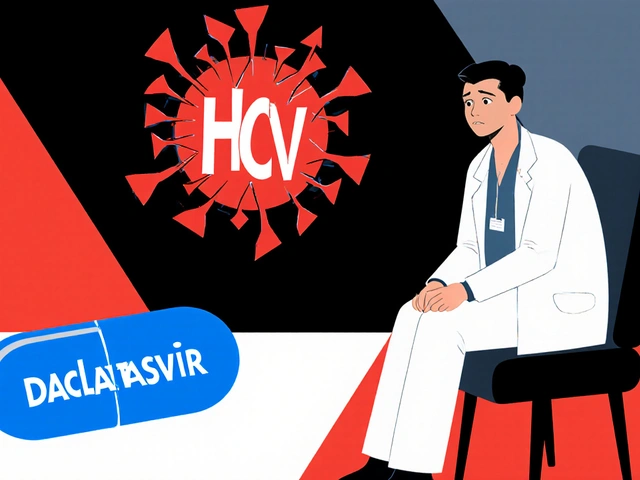Effective Strategies for Managing Abacavir Resistance in HIV Therapy
Managing Abacavir resistance is a crucial aspect of optimizing HIV therapy. HIV, known for its ability to adapt and mutate, sometimes presents resistance to drugs like Abacavir, a commonly used medication. Understanding how to handle this resistance can make a significant difference in the effectiveness of treatment.
The first step involves recognizing the early signs and patterns of resistance in patients. Regular monitoring and testing can play a big role in identifying when the virus is not responding to the treatment as expected.
Once resistance is detected, healthcare providers need to adjust the treatment plan. This often means switching to alternative medications that the virus hasn't developed resistance to, ensuring the treatment remains effective.
Lastly, maintaining the overall health of the patient is essential. This includes supporting their immune system, addressing any side effects from medications, and providing psychological support. A well-rounded approach can help manage resistance and support the patient's health journey.
- Understanding Abacavir Resistance
- Identifying Resistance in Patients
- Adjusting Treatment Plans
- Maintaining Patient Health
Understanding Abacavir Resistance
When it comes to treating HIV, the virus's ability to adapt and mutate is a central challenge. Abacavir resistance arises when the virus evolves mutations that make it less susceptible to the effects of the medication. This phenomenon can significantly impact the effectiveness of the therapy and necessitates a deep understanding to manage it properly.
The mechanism behind this resistance involves changes in the virus’s genetic structure. Specifically, mutations in the reverse transcriptase enzyme, which HIV uses to replicate itself, can lead to decreased sensitivity to Abacavir. According to a study published in the Journal of Infectious Diseases, certain mutations, particularly at the 184th codon, play a pivotal role in this resistance. These mutations compromise the drug's ability to inhibit the virus, allowing HIV to continue replicating.
Resistance is not just a laboratory concept; it has real-world implications on patient care and treatment outcomes. - Dr. Jennifer Hoy, Infectious Disease Specialist
Recognizing the signs of Abacavir resistance is essential for effective management. Often, it begins with a noticeable decrease in the drug’s efficacy. Patients may experience a rebound in viral load despite adhering to their medication regimen. Regular blood tests can reveal these changes early, permitting timely adjustments to the treatment plan.
Beyond the fundamental mechanisms, several factors can influence the emergence of resistance. One significant factor is patient adherence to the medication schedule. Inconsistent or incorrect usage of Abacavir can give the virus the opportunity to mutate and become resistant. This makes patient education and support a crucial element in managing HIV therapy.
Another important aspect to consider is the genetic variability of the HIV strain. Some strains are naturally more prone to developing resistance due to their genetic makeup. This variability requires personalized treatment plans tailored to each patient's specific situation.
Interestingly, a mosaic of resistance patterns can emerge within a single patient. This means different populations of the virus might show varying levels of resistance, complicating the treatment landscape further. Understanding these patterns can help in choosing the most effective alternative therapies and strategies.
To delve deeper into genetic variability and resistance patterns, researchers often use sophisticated tools like genotypic resistance testing. These tests analyze the genetic composition of the virus in an individual, identifying specific mutations associated with resistance. This detailed information guides healthcare providers in selecting the most appropriate therapeutic options.
Managing Abacavir resistance is not just about switching medications. It also involves ongoing monitoring and adaptive strategies tailored to each patient. This requires a collaborative effort between healthcare providers and patients to ensure that the treatment remains effective over the long term. By understanding the complexities of resistance, we can develop better strategies to combat HIV and support patient health.

Identifying Resistance in Patients
Detecting Abacavir resistance in HIV patients starts with keen observation and diligent monitoring. The virus is known for its ability to mutate, which can lead to drug resistance. Recognizing these changes early on can be vital for effective HIV therapy.
Healthcare providers often rely on virological tests to identify resistance. These tests measure the virus's load in the bloodstream. If the viral load is not decreasing as expected or starts to increase, it might be a sign that the virus is becoming resistant to Abacavir. Regular testing is crucial for catching these signs as soon as they appear.
Genotypic resistance testing is another essential tool. This method examines the genetic mutations within the virus that may cause resistance to specific drugs, including Abacavir. By pinpointing these mutations, doctors can decide if it's time to switch to alternative treatments. Early detection is key in managing and adapting the course of therapy effectively.
It's also important to consider the patient's adherence to the prescribed treatment. If patients do not take their medication consistently, the virus has more opportunity to mutate and become resistant. Ensuring patients understand the significance of adherence and the correct way to take their medication can prevent resistance from developing in the first place.
In some cases, patients might exhibit clinical signs of treatment failure. Symptoms such as unexplained weight loss, persistent fevers, or opportunistic infections might indicate that the current therapy isn't working due to resistance. Addressing these symptoms promptly can also help in identifying resistance early on.
"Consistent monitoring and patient education are pivotal in identifying and managing drug resistance. It’s about staying one step ahead of the virus, ensuring the treatment maintains its effectiveness," says Dr. Sarah Jenkins, an HIV specialist.
Understanding patient history is another integral factor. Patients who have previously undergone multiple HIV treatments are at a higher risk of developing resistance. Consequently, their treatment plans might require more frequent adjustments and monitoring compared to those who are newly diagnosed.
Patient-doctor communication is crucial in identifying and managing resistance. By fostering an open dialogue, patients can report unusual symptoms or side effects, which might be early indicators of resistance. Regular consultations and check-ins help in keeping track of the virus’s behavior and the treatment’s effectiveness.
Utilizing a combination of these strategies improves the chances of catching resistance early. This multi-faceted approach ensures that any signs of resistance are addressed promptly, allowing for quick adjustments to the treatment plan. By staying vigilant and proactive, healthcare providers can better manage Abacavir resistance and safeguard the health of their patients.

Adjusting Treatment Plans
When dealing with Abacavir resistance, adjusting the treatment plan is pivotal. This is not just about switching medications but involves a comprehensive approach that considers the patient's entire health profile. Start by thoroughly evaluating the extent of the resistance through genotypic or phenotypic testing. These tests help identify the specific mutations of the HIV virus that are resistant to Abacavir, which allows for more precise adjustments in the treatment regimen.
One effective strategy is incorporating a combination therapy approach, also known as Highly Active Antiretroviral Therapy (HAART). HAART involves using multiple antiretroviral drugs that target different stages of the HIV life cycle, reducing the chances of the virus becoming resistant to any single drug. Incorporating drugs like Dolutegravir or Tenofovir, which have shown high efficacy in patients with documented resistance, can be beneficial.
It's crucial to understand that each patient's genetic and health profile is unique. Hence, personalized medicine plays a vital role in HIV therapy. Tailoring the treatment plan to the individual's needs helps improve outcomes. Healthcare providers need to consider factors such as the patient's liver and kidney functions, potential drug-drug interactions, and any pre-existing conditions that could affect drug metabolism.
"The key to managing HIV effectively is not just in prescribing medications but in personalizing the care to fit each patient's unique needs." - Dr. Laura Waters, Chair of the British HIV Association.
One of the most important aspects in adjusting treatment plans is patient adherence. Without strict adherence to the prescribed regimen, the chances of developing further resistance multiply. Simplifying the treatment regimen by reducing the pill burden can encourage better adherence. This could mean opting for single-tablet regimens (STRs) that combine multiple drugs into one pill taken once daily.
Healthcare providers must also educate patients on the importance of adherence and the risks associated with missed doses. Providing support through regular follow-up appointments and open channels of communication can make a significant difference. Moreover, leveraging digital health tools like mobile reminders and apps for tracking medication can also improve adherence.
Monitoring the patient's response to the new regimen is another critical step. Regular viral load tests should be conducted to ensure that the virus is being suppressed effectively. If the viral load does not drop to undetectable levels, further adjustments may be necessary. This iterative process ensures that the treatment remains effective and that resistance is managed proactively.
By taking a comprehensive and patient-centered approach, adjusting treatment plans can help manage HIV therapy despite the challenges posed by Abacavir resistance. It involves an ongoing cycle of assessment, adjustment, and adherence, ensuring that the patient's health and quality of life are maintained throughout their treatment journey.

Maintaining Patient Health
Maintaining the health of an HIV-positive patient, particularly when dealing with issues like abacavir resistance, involves a multi-faceted approach. It's not just about the medication; it’s about supporting the patient's overall well-being. This is key to effective HIV therapy.
Firstly, supporting the immune system is critical. Patients should have regular check-ups to monitor their CD4 cell count and viral load. A balanced diet rich in vitamins and minerals can help boost the immune system’s function. Exercise also plays an important role as it helps improve cardiovascular health and overall energy levels. Encouraging patients to stay active can make a significant difference in managing their condition.
Mental health support is equally crucial. Dealing with HIV can be emotionally taxing, and the additional stress of drug resistance can further strain a patient’s mental health. Regular sessions with a therapist or counselor can provide the necessary emotional support. In some cases, joining a support group with individuals facing similar challenges can foster a sense of community and ease the mental burden.
Frequent assessments for treatment side effects are necessary. Many HIV medications can cause side effects like nausea, fatigue, and sleep issues. Addressing these promptly can prevent them from becoming a bigger problem. Sometimes, adjusting the dosage or switching medications within the same class can mitigate these side effects.
Adherence to the treatment plan is paramount. Patients need to take their medications exactly as prescribed to prevent further resistance and ensure efficacy. This can be supported through educational programs which explain why adhering to the medication schedule is essential. Use of pill organizers and setting alarms can also help patients remember to take their medications on time. In the words of Dr. Anthony Fauci, Director of the National Institute of Allergy and Infectious Diseases:
“Adherence to therapy is so critically important. Missing doses can lead to resistance and that undermines the whole treatment effort.”
Regular testing and follow-ups are critical in assessing how well the treatment is working and making timely adjustments. Periodic lab tests not only track the virus’s response to treatment but also check for any other health issues that might need to be addressed.
Educating patients on the potential signs of treatment failure allows for quicker intervention. Symptoms like persistent fever, unexpected weight loss, and frequent infections might indicate that the current treatment isn’t effective anymore.
Lastly, the role of social support can’t be underestimated. Encouragement from family and friends helps foster a positive outlook, which plays a significant role in overall health. Being surrounded by a strong support network of people who understand and respect their medical journey can empower patients to better manage their condition.
Managing HIV, particularly in the face of drug resistance, requires a comprehensive approach that attends to both the physical and the mental health of patients. This ensures they can lead fulfilling lives despite the challenges presented by their condition.









So we're just gonna keep swapping pills like a game of HIV musical chairs? 🤡 At this point, I'm convinced the virus is just trolling us with its evolution speed. Abacavir? More like Abacavir-who-cares-anymore.
The fundamental flaw in this entire paradigm lies in the reductionist, pharmaceutical-centric model of HIV management. One must consider the epistemological hegemony of Western biomedicine, which systematically ignores the bioenergetic and vibrational imbalances induced by glyphosate-laden food systems and 5G-induced mitochondrial dysregulation. Abacavir resistance is not a biological phenomenon-it is a symptom of civilizational collapse.
You people are literally just giving up. If you didn't skip doses, didn't drink soda with your meds, and didn't sleep 3 hours a night while binge-watching TikTok, this wouldn't be an issue. It's not the virus-it's YOU. Stop blaming science for your laziness. I've been on ART for 12 years and my viral load's been undetectable since day one. You're not failing the drug. You're failing yourself.
I just want to say how brave everyone is for sticking with this 😊💖 It's so hard to keep going when your body feels like it's betraying you. I know someone who's been on 7 different regimens and still smiles every day. You're not alone. Sending love and good vibes your way 🌸
I think the key takeaway here is that resistance isn't a failure-it's an adaptation. The virus is surviving. That doesn't mean we lose. It means we adapt. The article lays out a solid framework: test, adjust, support. No magic bullets, but a lot of human care. That’s the real treatment.
The article contains several grammatical inconsistencies. For instance, 'Abacavir resistance' is inconsistently capitalized throughout. Additionally, the use of 'it’s' versus 'its' is frequently erroneous. The quote from Dr. Fauci is incorrectly punctuated. These oversights undermine the credibility of the entire piece. Please, someone proofread before posting.
Biggest tip? Pill organizer + phone alarm. Set it for the same time every day-even if you're hungover or at a party. I used to miss doses like a pro... now I’m undetectable. No magic. Just consistency. 💪💊 And yes, therapy helped too. Mental health = immune health. You got this.
ok so i just wanna say… i started taking my meds at 9pm every night and i swear my energy is way better?? like i used to be tired all day but now im actually kinda vibin? idk maybe its placebo but also maybe its not?? also my therapist said to celebrate small wins so… i celebrated today by eating a whole pizza 🍕❤️
Bro this is why I don't read medical articles. Too much text. Can someone just tell me what pill to take and when? I'm tired. Can I just nap?
James, you’re not tired-you’re avoiding responsibility. That’s not nap energy, that’s denial energy. You think the virus gives a damn if you’re tired? It’s replicating while you scroll. Take the damn pill. Then nap.